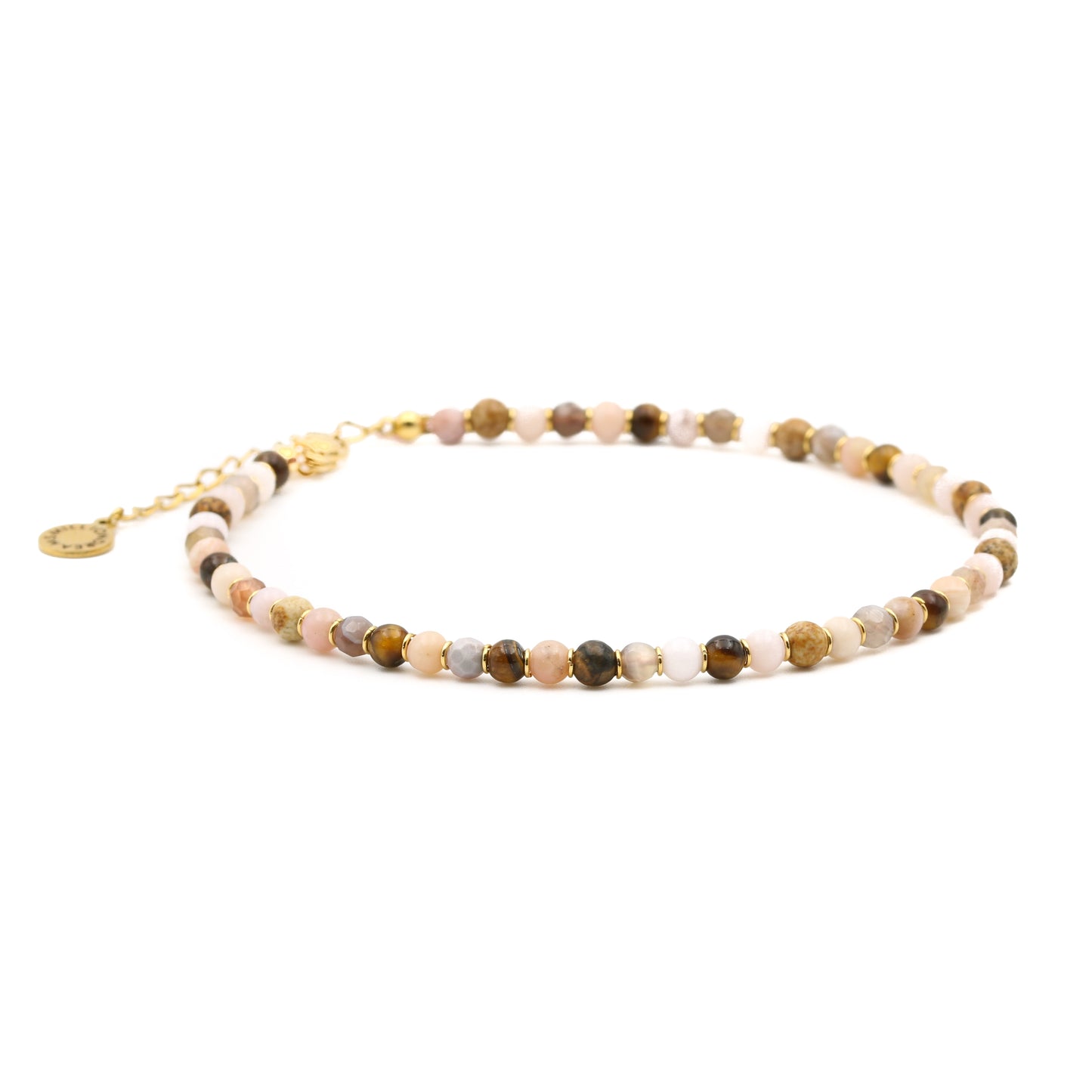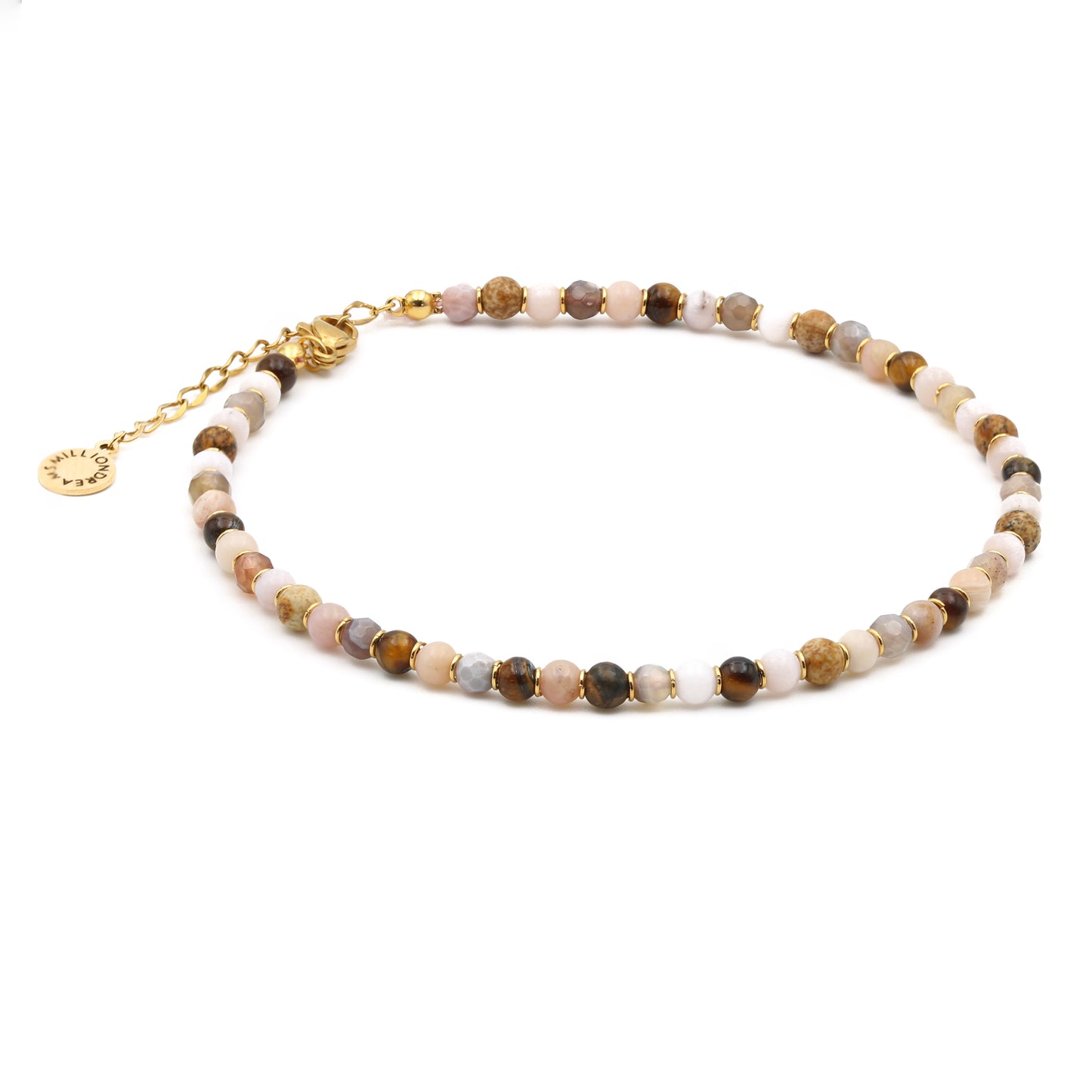Milliondreams Caorle
"Rosae" Anklet - CAORLE THE SMALL VENICE Collection
"Rosae" Anklet - CAORLE THE SMALL VENICE Collection
Couldn't load pickup availability
NOTE
NOTE
Tutti i nostri prodotti Million Dreams sono interamente assemblati a mano in Italia, a Caorle. Utilizziamo solo materiali di alta qualità, tra cui pietre preziose, colori specifici e parti in metallo come l'acciaio (Nickel free), l'argento 925 e la placcatura in oro 18 kt. Questi elementi, insieme alla lavorazione artigianale, conferiscono ad ogni pezzo unicità e caratteristiche specifiche che possono includere leggere imperfezioni. Proprio per questa ragione, i colori e le finiture dei prodotti possono variare leggermente rispetto alle immagini campione esposte sul nostro sito o nei nostri cataloghi. Queste variazioni non sono da considerarsi difetti, bensì parte del fascino e dell’autenticità dei nostri articoli, rendendo ogni pezzo unico nel suo genere.
Exclusivity: a must MIllion Dreams Caorle , as for this anklet, with a finer diameter of the stones, whose shades stand out for variety and combination, inspired by the beautiful and lively colors of the seaside village "CAORLE", of its sea, of the expanse of golden beach.
Elegance in an unmistakable Million Dreams ethnic style.
This anklet will give a touch of originality to your look, but it will also be a special gift for whoever you want.
All our Million Dreams products are entirely assembled by hand in Italy, in Caorle. The stones and the steel parts make their imperfections a specific and natural feature.
Composition in cotton thread with hook, chain + nickel free gold stainless steel inserts;
3.5 MM DIAMETER PINK OPAL + BOTSWANA AGATE + SUNSTONE + TIGER'S EYE
Length: 25/30 cm.
Stones diameter 3.5 mm (average between 2.5 ÷ 4 mm).
The opal it's a mineral colloidal amorphous , consisting of silica hydrates ( SiO 2 n H 2 O), semi-amorphous or microcrystalline , i.e. free of reticular structure , in fact it does not occur in crystals, but in veins, nodules and crusts of various colors, often with iridescence. The color varies from transparent to milky white, with an infinity of different intermediates (green, red, yellow, brown, black).
The word "opal" has root common in Sanskrit ùpala , in Greek ὀπάλλιος opallios is in the Latin opălus (meaning " precious stone " [4] ).
97% of the world's opal production is in Australia [5] , a country that made it the national stone, especially in the area of Lightning Ridge , where black opal is mined. Important deposits are also located in Mexico and in Ethiopia .
The opalescence , the play of colors and light presented by the opal samples, is due to the effects of interference and to diffraction of the light caused in turn by the regular arrangement of the silica spheres, which arrange themselves in a packed, regular and three-dimensional shape; it is therefore similar to the arrangement of crystals.
Agate (from the Greek ἀχάτης, achátes) is a variety of chalcedony , a generic name given to quartz , when it occurs in compact masses of microcrystalline silica with a fibrous-oriented texture. Agate has a typical zoned structure which is visible even to the naked eye, thanks to the diversity of color. The agate Botswana is a particular type of agate , its colors enchant and conquer. ... This variety of banded chalcedony has colors ranging from brown to orange and pink to gray. The stone is wrapped in its warm streaks that refer to its protective action.
In medieval legends a "stone of the sun" is reported which seems to have allowed the Vikings to orient themselves with respect to the position of the sun even with fog or overcast skies during their long journeys at sea. A Danish archaeologist, Thorkild Ramskou, hypothesized in 1967 that it could be crystals with pleochroism , able to highlight the polarization of sunlight that occurs in the atmosphere, invisible to the naked eye. According to this hypothesis, it could be precisely cordierite , quite common in the form of pebbles on the Norwegian coasts. There cordierite it is a mineral, more precisely a cyclosilicate of aluminum, iron and magnesium. Cordierite was named in honor of the French geologist Pierre Louis Antoine Cordier (1777 - 1861). It is known for the very obvious pleochroism , that is, a change of color depending on the direction from which it is illuminated, so much so that it is called dichroite ("two colors", in ancient Greek). When he shows up as gem , blue-purple in color, is called Iolite.
Tiger's eye is a variety of quartz containing inclusions of crocidolite , a mineral belonging to the asbestos group. The presence of these isooriented fibers, yellow in color tending to gold, gives the mass a particular effect called chalking . It is mainly used as a gem for jewelry making usually cabochon cut. The mineral comes mainly from South Africa and is appreciated for its particularity.
Share




